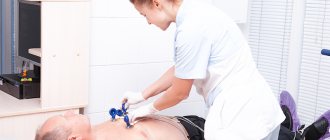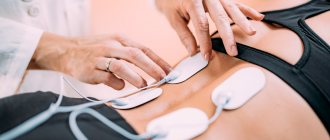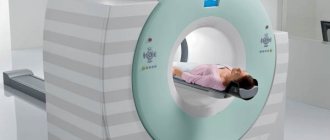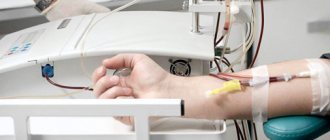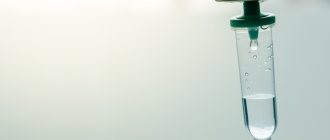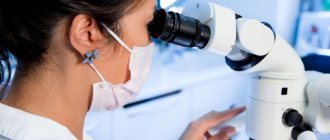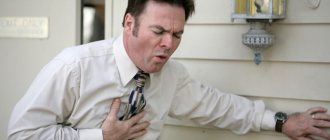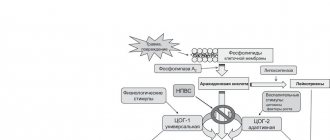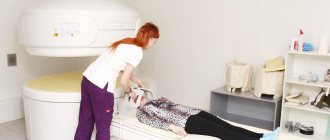Holter is a medical device for recording an electrocardiogram throughout the day. This device is named after the English inventor Norman Jeffers Holter, who first used this device in 1961. This name of the device is more often used in everyday life, and its scientific name is 24-hour Holter electrocardiogram monitor.
Why do you need a holter?
The human heart is a complex muscular organ, the functioning of which can malfunction, which can be fatal. Often, problems in the functioning of the heart can arise only in certain conditions, and their identification is difficult during a routine visit to a cardiologist and recording an ECG at the appointment. After all, during the usual procedure for recording an ECG, from 3 to 20 cycles of heartbeats are recorded, and there are at least hundreds of thousands of them per day! That is, in simple terms, the doctor may not “catch” a pathological episode of heart rhythm on the tape.
Types of blood pressure monitoring
There are two ways to monitor your heart:
- Full-scale monitoring - ABPM Holter - a continuous 3-day study, as a result of which various pathologies are identified, including their early stages. More than 100 thousand heart beats are recorded, blood pressure readings are recorded;
- Fragmentary monitoring of cardiac activity - an electrocardiogram (ECG) - is capable of recording a negligible fraction of heart beats, about 50. Accordingly, the general idea of the presence of a potential health problem is not fully objective and relevant at the current time. This study is prescribed for patients who do not experience regular pain in the heart area.
Holter ABPM is a study that is indicated for patients who suffer from constant pain in the sternum from the heart, tingling or pinching, and a feeling of cardiac discomfort.
When is Holter use necessary?
- If there are complaints about disruptions in the functioning of the heart: pain, loss of consciousness, unprovoked rhythm disturbance, etc.;
- For heart defects;
- Preventive and/or diagnostic observation of patients with diagnosed ischemic heart disease, arrhythmias;
- Patients with hypertension, especially if the diagnosis of arterial hypertension is established for the first time, or when the effectiveness of prescribed therapy decreases;
- People with diseases of the endocrine system;
- A patient who is overweight;
- With repeated episodes of loss of consciousness;
- Weather-dependent people;
- To evaluate the performance of the pacemaker;
- To assess the effectiveness of the treatment
Who should not conduct
There are absolute and relative contraindications to performing ECG stress tests.
Absolute:
- the first 2 days of acute myocardial infarction;
- unstable heartbeat without prior drug treatment;
- pronounced signs of aortic stenosis;
- acute pulmonary embolism;
- acute pericarditis and myocarditis;
- dissecting aortic aneurysm, occurring in an acute form.
Relative:
- aneurysm of blood vessels or heart;
- hypertension with systolic blood pressure above 200 and diastolic blood pressure above 110 mmHg. Art.;
- tachyarrhythmia of unknown origin;
- bradyarrhythmia with pronounced symptoms;
- heart block;
- hypertrophic cardiomyopathy;
- severe heart rhythm problems, fainting;
- mental or physical disorders that prevent adequate physical activity;
- electrolyte disturbances;
- joint diseases;
- severe anemia;
- endocrine diseases;
- severe obesity.
Testing is not recommended in case of fever, acute thrombophlebitis, or recent stroke. However, relative contraindications are neglected if the significance of the diagnostic results outweighs the risks.
During the procedure, the patient is constantly under the supervision of a specialist. If during the examination a severe arrhythmia, sharp chest pain, increased blood pressure, dizziness, darkening of the eyes occur, or your health deteriorates significantly, the testing is stopped immediately.
How is monitoring carried out?
To carry out daily ECG monitoring, you will need to make 2 visits to the doctor: during the first visit, a portable recorder is installed: disposable adhesive electrodes are fixed to the chest area, and a bag with a recorder is fixed on your belt. Modern devices are compact and quite light (about half a kilogram). At the follow-up appointment, the monitor is removed, the data is entered into a special program and analyzed by a cardiologist.
ECG monitoring with a Holter device is usually prescribed for 24 hours; in certain cases, the diagnostic time can be extended to 48-72 hours or even a week.
No special preparation is required for Holter installation; in rare cases, it is necessary to remove hair in the area where the electrodes are installed.
During the study, a person should live his normal life, with the exception of active physical activity and water treatments, as well as strong temperature changes (this can damage the device). Sometimes the subject may be given special instructions, such as keeping a diary of activity and rest, taking medications, episodes of anxiety, etc. Also, the doctor may ask the patient to perform certain physical exercises: climbing or descending stairs, running - for the most accurate assessment of the work of the heart muscle in various conditions.
During Holter monitoring, it is not recommended to be near powerful electrical equipment, transformer boxes, etc.
How does a holter work?
The monitoring device is a portable device with a memory card, to which several electrodes are connected using wires, transmitting the heart rhythm in the form of an ECG. The information is read by the device and recorded on the memory card. At the end of the study, the equipment is handed over to the doctor, who interprets the results and identifies possible violations.
There are two types of holters:
- Three-channel (simple) – records shocks and electrical activity;
- Twelve-channel (complex) – additionally analyzes the level of oxygen supplied to the muscle.
Unlike a conventional ECG, this type of examination makes it possible to continuously record heart rhythms in various life situations for a long time. During monitoring, more than 100 thousand contractions are recorded, whereas during a regular cardiogram - only 50-60.
During an electrocardiogram, it is not always possible to identify pathologies, since failures are often provoked by external factors: increased physical activity, emotional fluctuations, etc.
Fragmentary recording is allowed - when the inclusion of the cardiac recorder is controlled by the patient. That is, the equipment is recorded for a day or more, but recording is carried out only after switching on, if a person feels pain, signs of arrhythmia or other symptoms. There are devices for fragmented monitoring in the form of a bracelet that is attached to the wrist.
What measurements does Holter take?
- Electrocardiogram recording;
- Determination of heart rate, including the maximum and minimum number of heart rates per minute, as well as the average heart rate;
- Recording physical activity and rest (actiography);
- Blood pressure measurement (modern Holter recorders allow ABPM to be carried out simultaneously with a study of cardiac activity.
You can sign up for Holter monitoring in our clinic right now, and receive a detailed report within 24 hours!
Your heart is under control
Modern medicine has everything necessary to detect pathology in the cardiovascular system at an early stage. One of these methods is heart monitoring, or more precisely, ABPM - 24-hour Blood Pressure Monitoring. The method developed by Norman Holter, during which specialists continuously monitor cardiac function for 24 hours, was named after its creator. At one time, Holter proved the value of his technique, which lies in the fact that the maximum effectiveness of monitoring cardiac activity occurs not at rest, as in the ECG procedure, but when the full cycle of human activity is covered during the day.
Holter examination will not cause any inconvenience
If you need a Holter ECG, but you are afraid of the procedure itself, then you just need to understand the rules for its implementation. The doctor will place electrodes on your body, mainly on the bones of the chest with minimal muscle coverage. The natural movement of muscles during movement and breathing can reduce the accuracy of data recording. The electrodes do not generate electric shock and do not produce any effect on your body at all. After installing the electrodes, the recorder is turned on and the study begins. That's all it takes.
What to avoid during Holter diagnostics
The use of a holter has its own characteristics. The Holter ECG result can be disrupted by a number of devices. This will make the results incorrect and undo all the work.
- You must not use the microwave oven or even approach it while it is operating.
- Devices that transmit radio signals cannot be used; mobile phones can be used without restrictions
- You should avoid the metal detector frame; it is not even recommended to walk near it
- You cannot pass through the electromagnetic arches that the stores are equipped with. It is better to avoid shopping altogether on the day of diagnosis.
- You cannot go through other diagnostic options using x-rays, ultrasound, magnetic waves
- Do not remove batteries from the recorder, expose it to intense heat, or get it wet.
Contraindications for examination
Holter monitoring has no contraindications, except for acute inflammatory processes on the skin in the chest area (where the sensors are attached). This is an absolutely safe non-invasive diagnostic method that can be used at any age, all categories of the population, including pregnant women. However, it is not recommended to conduct the study during febrile conditions, as this distorts the results. It is better to wait for final recovery and then sign up for the procedure.
During monitoring, you should avoid X-rays, MRIs, and stay away from sources of heat and cold, magnets, microwave ovens, TVs, smartphones - anything that can distort the operation of electrical sensors.
It's easy to go through the research.
It is easy to undergo a study at the Poema Health clinic. It is located near Ozerki metro station and Prosveshcheniya metro station, the halter is installed quickly and at a time convenient for you. The best version of the device will be selected, instructions will be provided and the device will be installed. Upon completion of the study, you will return to us, and the doctor will decipher the data from the Holter and, comparing it with your diary, will make a diagnosis. After this, you can decide on treatment and be firmly on the path to recovery.
Have questions? Call: +7(812) 30-888-03.
What is the essence of the technique?
The technique is based on ECG (electrocardiography), which is carried out over a long period of time - from one day to seven. A special device - a recorder (or registrar) - records ECG readings for the entire period of wearing. Recording is most often carried out through 2-3 (up to 12) channels, that is, electrodes. The recording is stored in different ways - either on magnetic tape or in the electronic memory of the device.
In addition, recording can be carried out throughout the allotted time without interruption, or only excerpts (events) are noted. The device itself is attached using a belt on the belt.
In most cases, multichannel data obtained by Holter do not coincide with the results of a surface ECG, so both of these studies are performed.
Cardiologists at our clinic use this type of diagnostics of heart problems along with ECG. Before conducting a Holter examination, our doctor will tell you in detail how to use the device correctly and explain all the nuances of Holter monitoring that you need to know.
Mechanism of operation
The result of the latest developments has been the appearance on the market of devices with multifunctional monitoring, which, in addition to the ECG, record blood pressure levels and other physiological parameters.
The mechanism of operation of 24-hour cardiac monitors is identical to an ECG device. Sensors are fixed on the patient’s body, with the help of which continuous (or episodic in case of multi-day fragmented monitoring of events) recording of the electrical activity of the myocardium occurs. Through the wires, the indicators are transmitted to the recorder with a memory card. The latest models provide online data transfer function.
How is data obtained during Holter monitoring analyzed?
The data collected by the device is processed using special computer programs, but there are no uniform standards for data analysis yet, so all indicators must be reviewed by a doctor. When deciphering Holter indicators, the following parameters must be indicated:
- heart rhythm and its disorders;
- pauses in rhythms;
- interval changes;
- correlation between Holter indicators and the patient's diary.
Each change in heart rate should be illustrated by the corresponding moment on the cardiogram tape.
